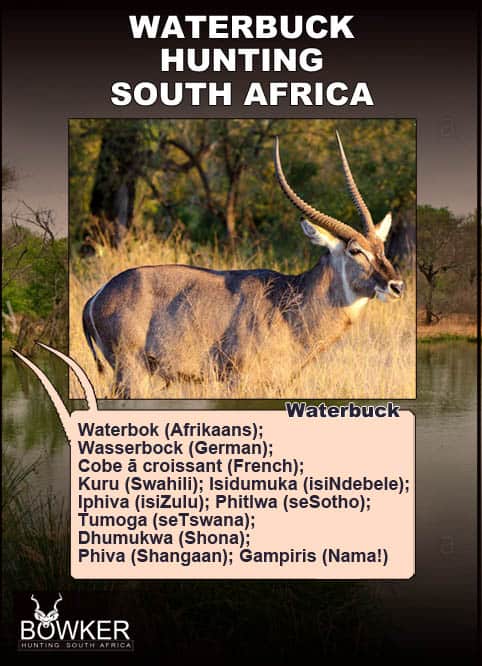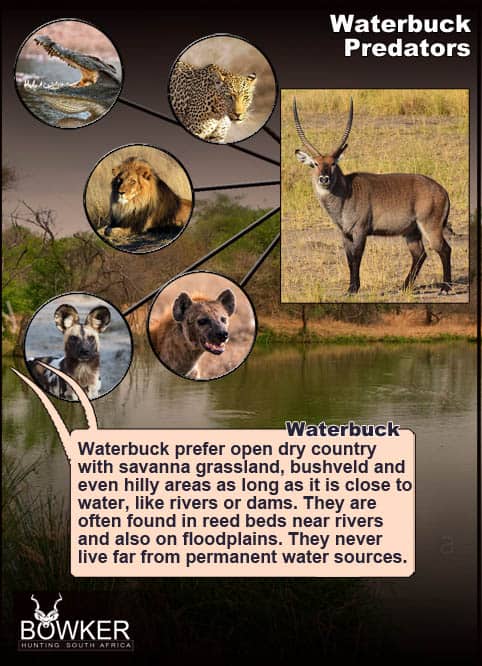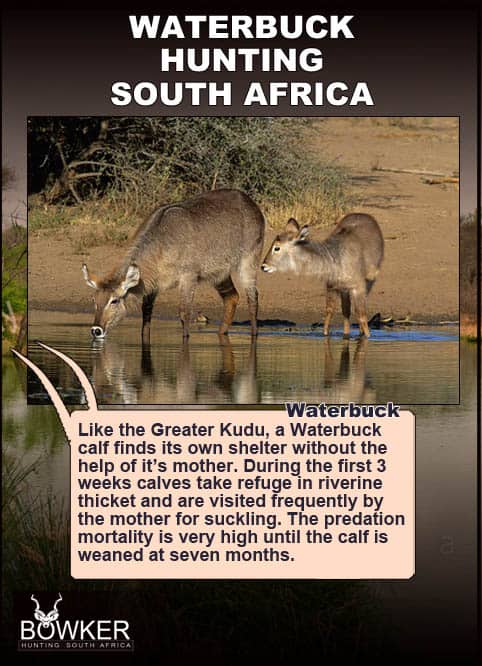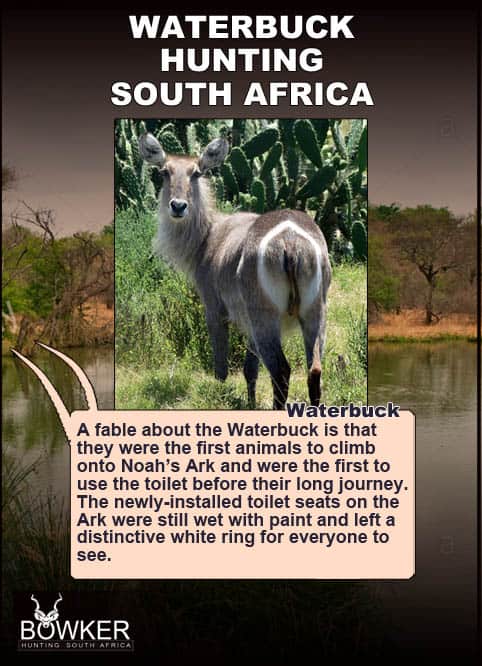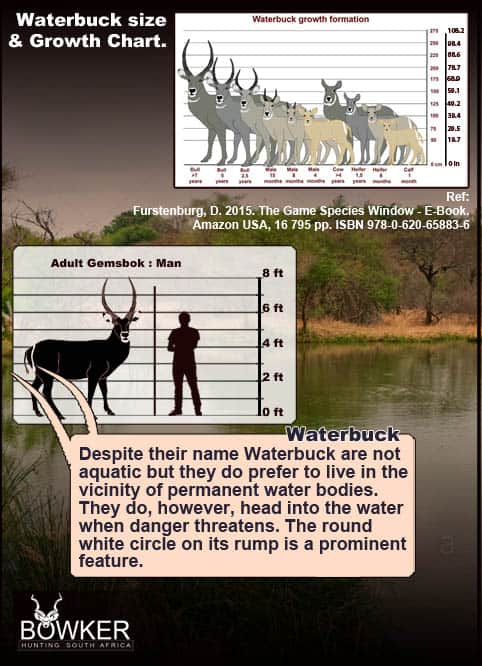
Summary
Waterbuck hunting – sort-after trophies with impressive horns that sweep back.
There are no seasonal restrictions on safari hunting waterbuck in the Eastern Cape.
Nick Bowker Hunting offers African hunting year-round.
Our hunting areas produce outstanding hunting for this game species.
Hunts take place on varied terrain.
Waterbuck are hunted in the savanna, plains, woodlands, and mountains.
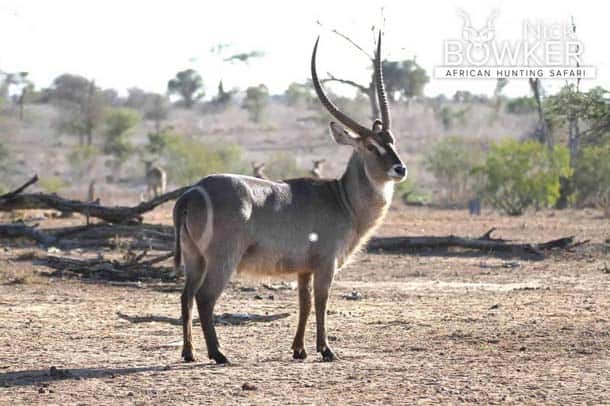
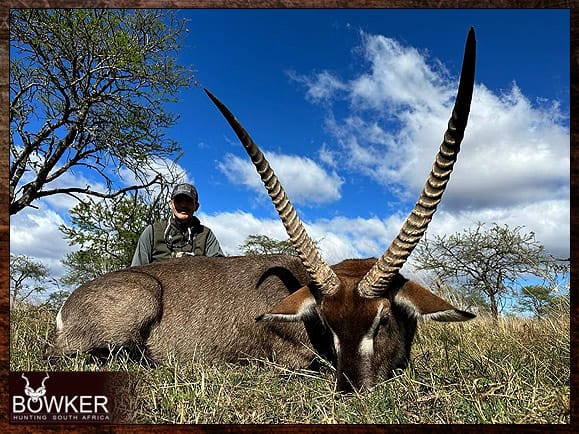
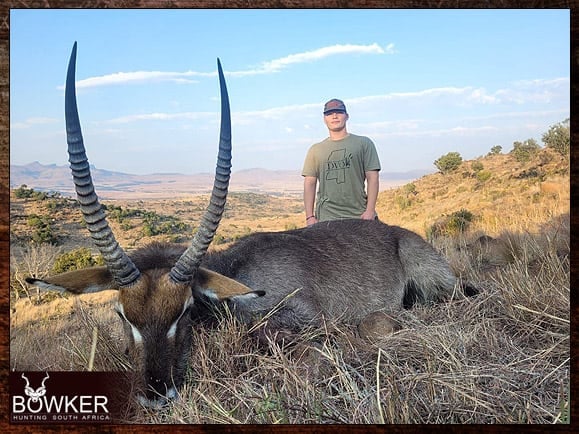
Table of Contents
Trophy Fees in South Africa -2025
The average price of a Waterbuck is $2000. African hunting packages often include a Trophy Waterbuck Trophy.
This hunting package includes a licensed hunting guide, a hunting license, and all permits.
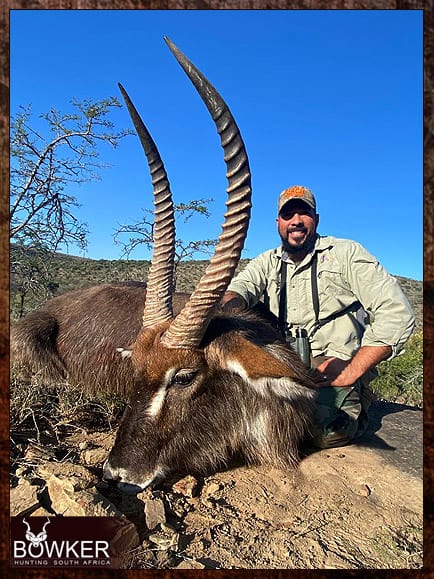
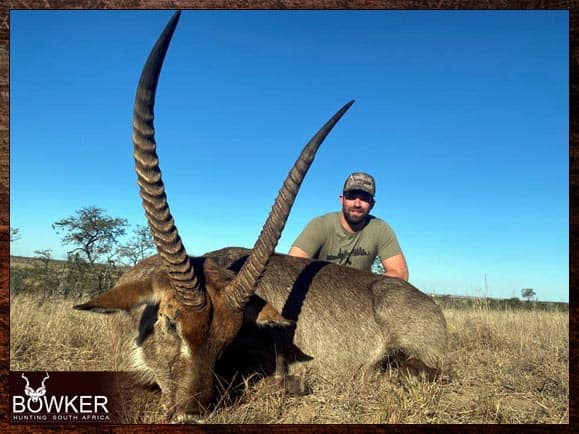
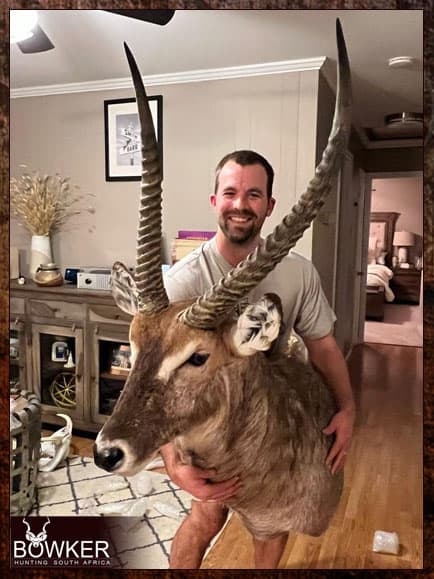
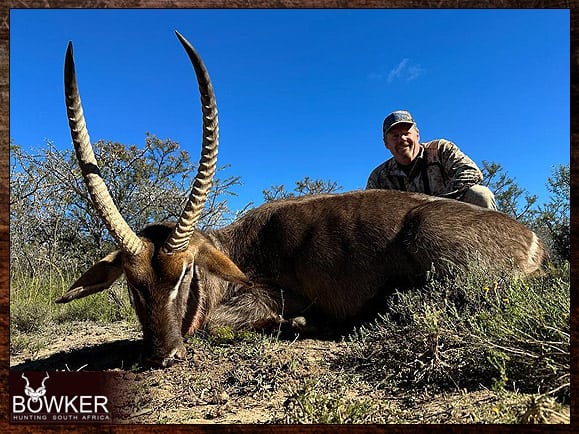
Waterbuck Hunting in South Africa

Shot placement must be in the bottom third of the animal directly above the front shoulder. This will ensure a heart or lung shot. Avoid head and neck shots which are high-risk.
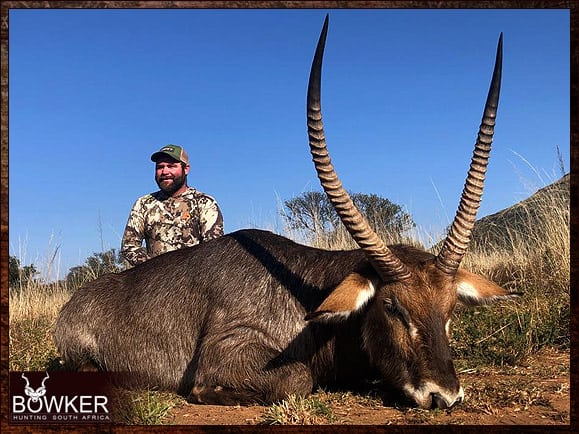
Your waterbuck trophy should have an average shoulder height of around 52 inches, weigh about 550 pounds, and have a Horn Length of approximately 26 – 28 inches.
The Safari Club International minimum score for a waterbuck is 67. This is measured by adding the length of each horn and the circumference of the bases.
This is a sought-after trophy for many hunters traveling to Africa, with impressive horns sweeping back and hooking forward – a very impressive antelope.
Its sheer size makes it a desirable trophy on many safaris. Methods of hunting include ambush techniques and spot and stalk.
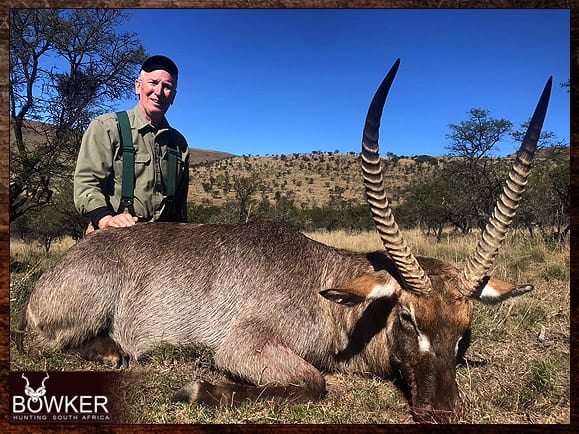
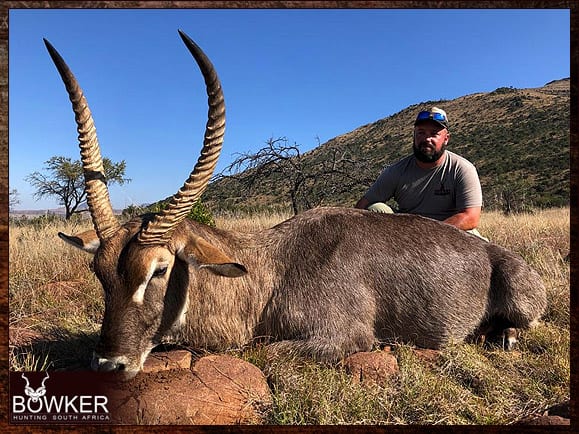
Hunting Waterbucks free-range takes work. Stalks will be long, and patience is required.
Hunting waterbuck is a must for any aspiring African hunter.
They are very territorial when mating, and it is common to encounter bulls in a ferocious battle while hunting.
Most of these animals are shot behind high fences in the Eastern Cape; Nick Bowker hunting has access to several free-range herds in the Bedford area.
A combination hunt in Bedford of red lechwe, nyala, sable antelope, kudu, and Waterbuck bull makes for a spectacular hunt.

Trophy Judgement and Rifle Caliber for the Hunter
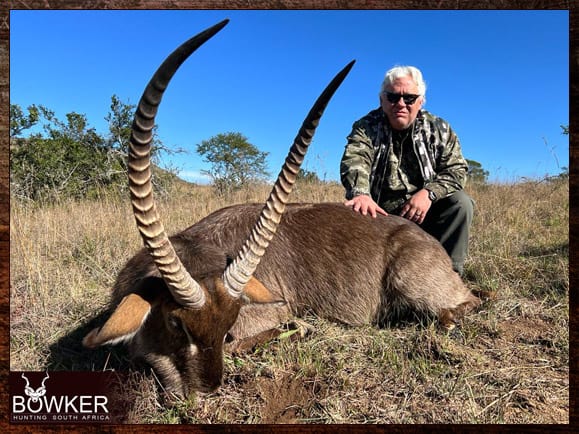
As with most African animals, shot placement should always be in the bottom third of the shoulder. The 7 mm and 30 calibers are the preferred selection.
For those hunters who wish to avoid going through the red tape of bringing a rifle into South Africa, Nick Bowker Hunting has 300 Winchester Magnums fitted with suppressors. Bow hunting in our area for Waterbuck is extremely tough given their excellent eyesight.
Mounted on the rifles are Swarovski tactical scopes. We have hand-loaded Hornady ELD-X 200-grain ammunition. This setup, including ammunition, is available as part of all hunting packages .
An old bull is one of the most cunning animals to hunt. It is very alert, with a keen sense of smell and super eyesight.
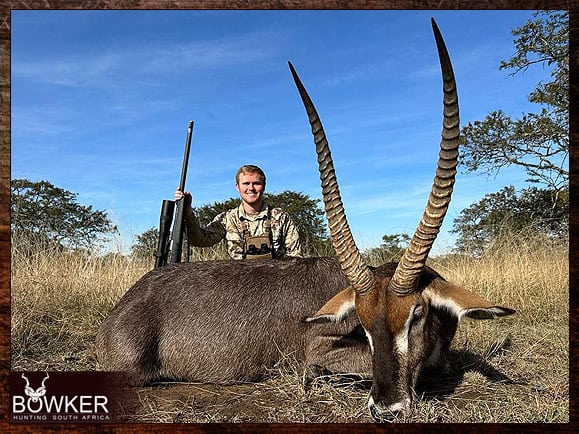

Judging the trophy quality of this game species can be challenging at times, especially for lone bulls.
As with all African animals, a thick, heavy, darkened neck is the first sign of maturity and often the most visible maturity characteristic when observing at a distance.
Also, look at the color of the horns. An old bull will exhibit at least two-thirds of the horn as an off-white color.
Look at the bases and ensure they are solid and prominent.
The hook in the horns is where the hidden length lies and differentiates a good bull from an outstanding bull.
A good symmetrical shape with smooth tips signifies an old bull and a trophy worth considering.
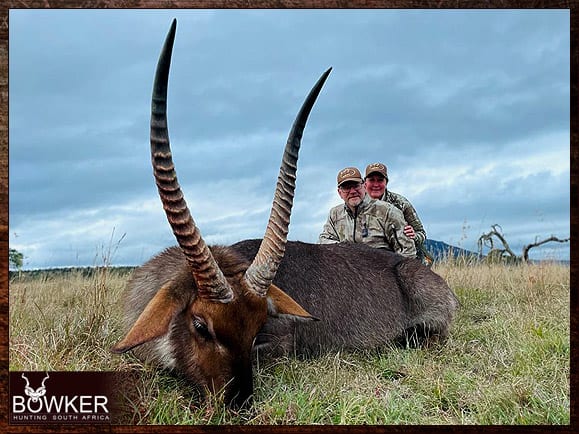
Difference Between a Male and Female for Plains Game Hunting
The difference between a male and a female is that the female does not have horns and is smaller.


Exciting Facts for Game Hunts
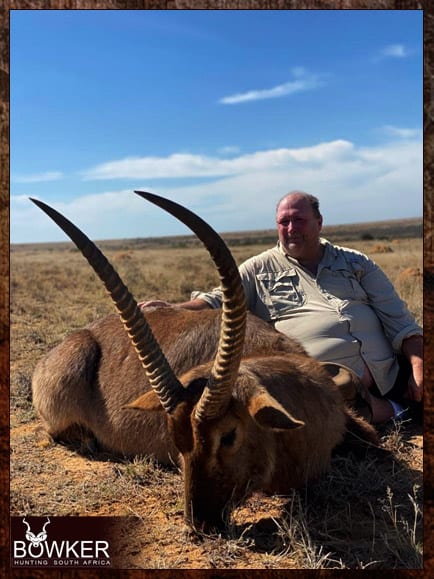
- As the name suggests, they are never far from water.
- Waterbuck are daytime grazers.
- They can evade predators such as lions by rushing into the water.
- Predatory cats are often reluctant to get their feet wet, even if it means missing out on a meal.
- They have a lot of hair around their necks, making them look like they should live in colder climates.
- As the hair is hollow, it allows for extra buoyancy when swimming and lets the waterbuck float.
- They release a special oil over the hair, which repels the water and prevents it from becoming saturated.
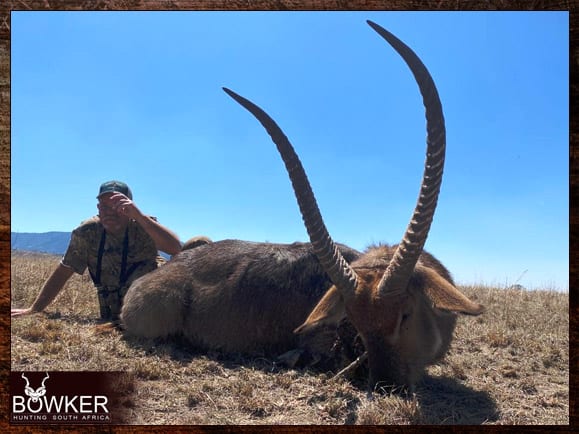
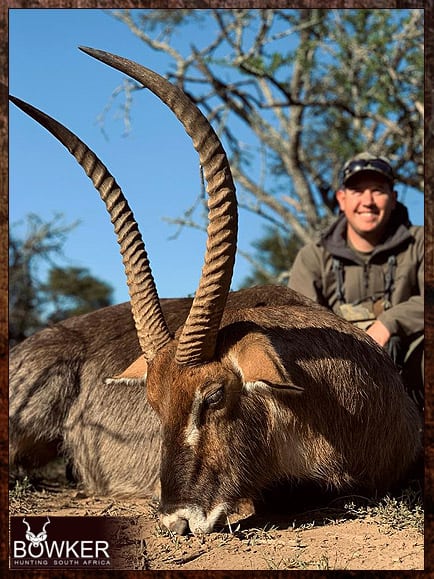
- The oil has a foul smell, and it was thought to be distasteful to crocodiles for a long time, thus keeping the waterbuck from being eaten.
- This theory, however, has been disproved of late.
- A more credible theory is that the oil acts as an insect repellent and reduces the number of ticks that the waterbuck have.
- The trademark white ring around the waterbuck’s hindquarters is a follow-me signal.
- If one of the groups spots a predator and runs, the rest will follow to avoid becoming dinner.
- Hunting involves a lot of glassing on savanna hillsides to find the ideal elusive waterbuck bull.

About the Waterbuck for Hunters
Description for Your Safari
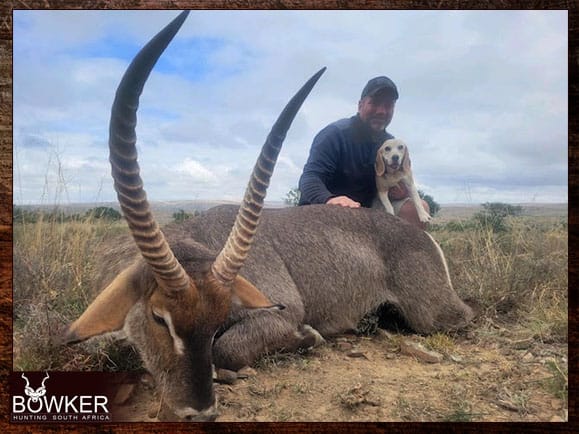
Common Waterbuck inhabit scrub and savanna areas along rivers, lakes, and valleys. A social animal, the Waterbuck, may form herds of 4 – 15 individuals.
These groups are either family groups with females and their offspring or bachelor herds.
Males start showing territorial behavior at five years but are most dominant from six to nine.
Males reach approximately 50 inches at the shoulder, while females reach 47 inches.
The Waterbuck is one of the heaviest antelopes.
A newborn typically weighs 30 pounds, and growth in weight is faster in males than in females.
Males typically weigh 450 – 600 pounds, and females 350 – 450 pounds.
They are of a robust build. The shaggy coat is reddish-brown to gray and becomes progressively darker with age.
Males are darker than females. Though thick, the hair is sparse on the coat. The hair on the neck, however, forms a long shaggy beard.
The long, spiral horns curve backward, then forward. Found only in males, the horns range from 22 to 30 inches in length.
The length of the horns is mainly related to the bull’s age but tips do wear down.
A rudimentary horn in the form of a bone lump may be found on females’ skulls.
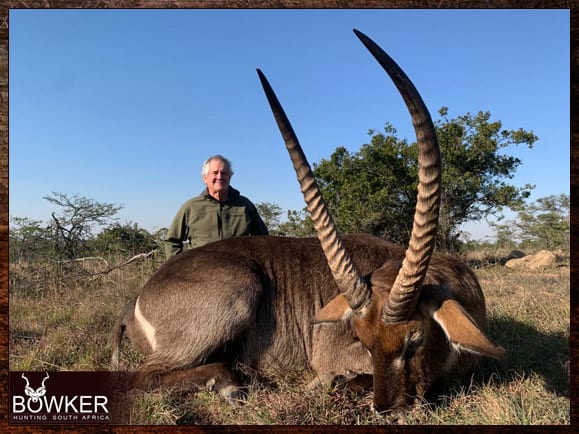
Information for Hunting Safaris

African animals’ bodies comprise about 70% water; it is no surprise that African mammals have had to develop tactics for keeping hydrated in a predominantly hot and dry environment.
They are very water-dependent, being especially prone to dehydration.
Always within a 5-mile radius of water but usually less than 2 miles from water, and will drink several times daily.
These game animals are primarily grazers and feed on medium to short grass near water.
Their digestive systems are adapted to coping with a high amount of roughage, although they select the more palatable protein-rich grasses.
They will also browse grass during the dry months. Grass has lower moisture content than browse, and they need to drink regularly to help digest.
Because they drink frequently, their droppings are usually wetter than other ruminants, and the pellets tend to deform and stick together.
After a gestation period of nine months, a single calf is born, or rarely twins.
The mother hides the young in a dense thicket or long grass for a few weeks after birth before joining the herd.
Calves are born during the summer months in South Africa, while mating occurs in winter.
Mating can happen during the year.
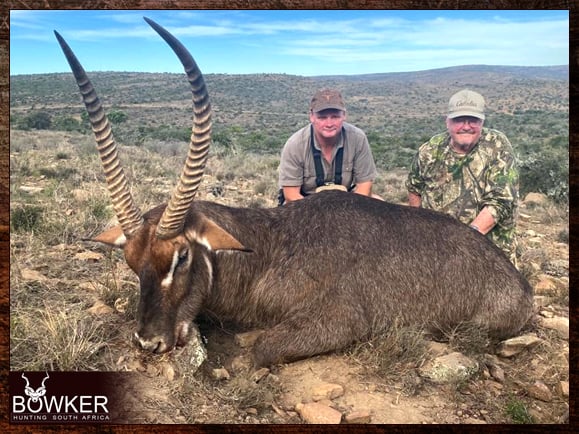
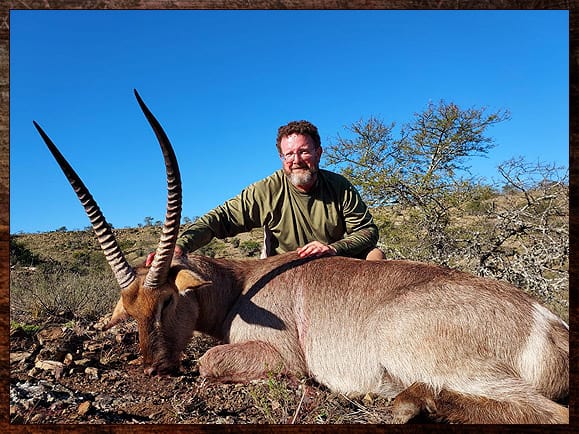
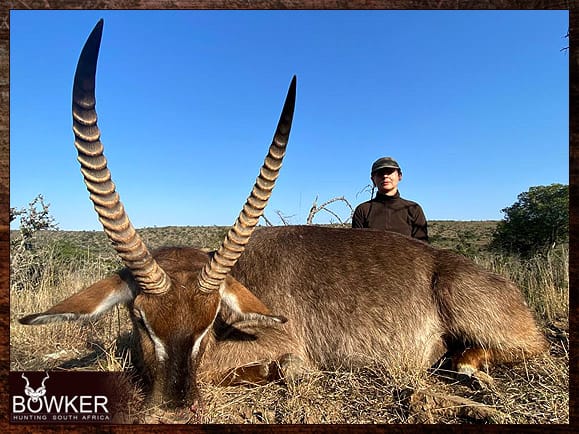
Frequently Asked Questions
How much does it cost to hunt a Waterbuck?

Trophy fees as a standalone Waterbuck hunt are between $ 2,000 and $ 2,500. Daily rates vary between $250 and $500 per day.
Included in the trophy fee is a licensed guide. As well as a hunting license and all permits.
A Waterbuck trophy is often included in a Plains game package. Package prices vary from $ 3,000 to $10,000, depending on location and size. Packages include 5 – 7 trophy animals, accommodation, meals, and daily rates.
How to hunt a Waterbuck?
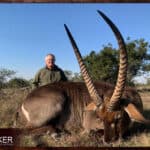
Hunt Waterbuck in the early mornings and late evenings and is spotted from an elevated vantage point in the thick brush and then stalked. Alternatively, hunters use ambush techniques at watering holes or as they move back to cover from feeding.
Where do you shoot a Waterbuck?
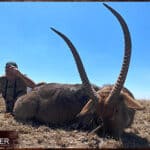
Shot placement must be in the bottom third of the animal directly above the front shoulder. This will ensure a heart or lung shot. Avoid head and neck shots, which are high-risk.
What is a trophy, Waterbuck?
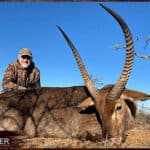
Waterbuck trophies have a Horn Length of approximately 26 – 28 inches. The minimum qualification score under Safari Club International for a Waterbuck is 67. Add the length of each horn and the bases’ circumference to get your SCI score.
How do you judge a Waterbuck trophy?
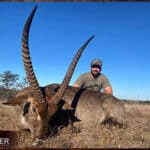
As with all African animals, a thick, heavy, darkened neck is the first sign of maturity and often the most visible maturity characteristic when observing at a distance.
Also, look at the color of the horns. An old bull will exhibit at least two-thirds of the horn as an off-white color.
A good symmetrical shape with smooth tips signifies an old bull and a trophy worth considering.
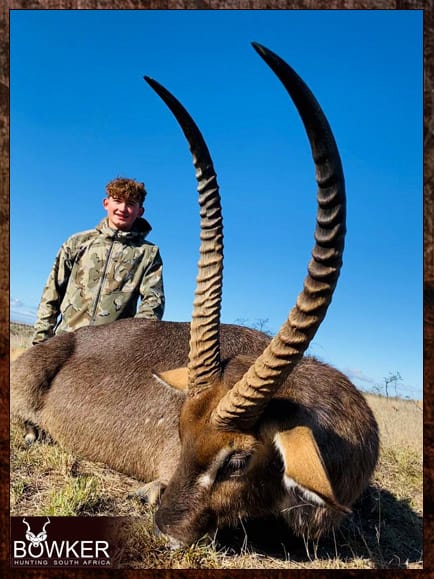
What Calibre is Recommended for Cape Waterbuck Hunts?
We recommend the flat-shooting 300 Winchester magnums with high-quality tactical scopes and a suppressor.
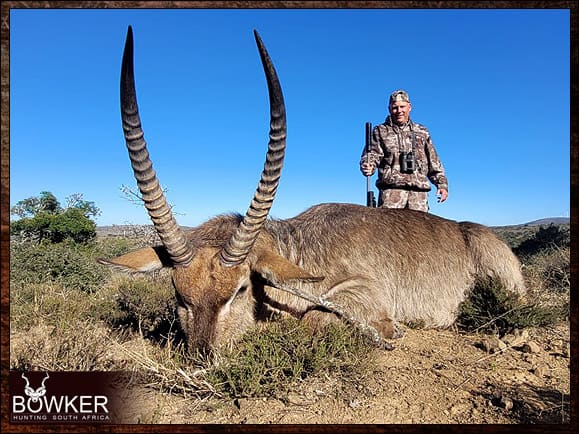
Seasonal Restrictions

When can you hunt Waterbuck in South Africa?
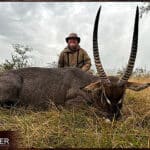
There are no seasonal restrictions on waterbuck hunting in the Eastern Cape of South Africa.
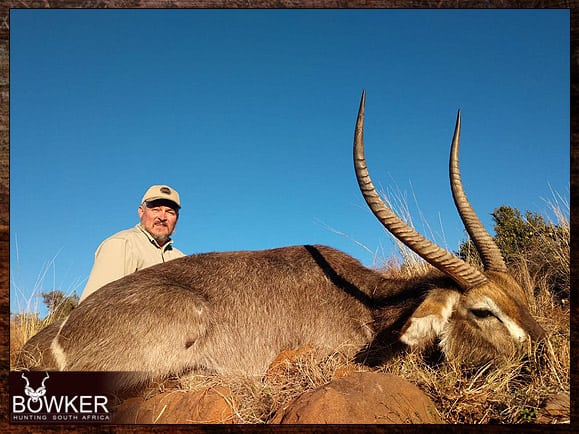
The Waterbuck in Pictures
